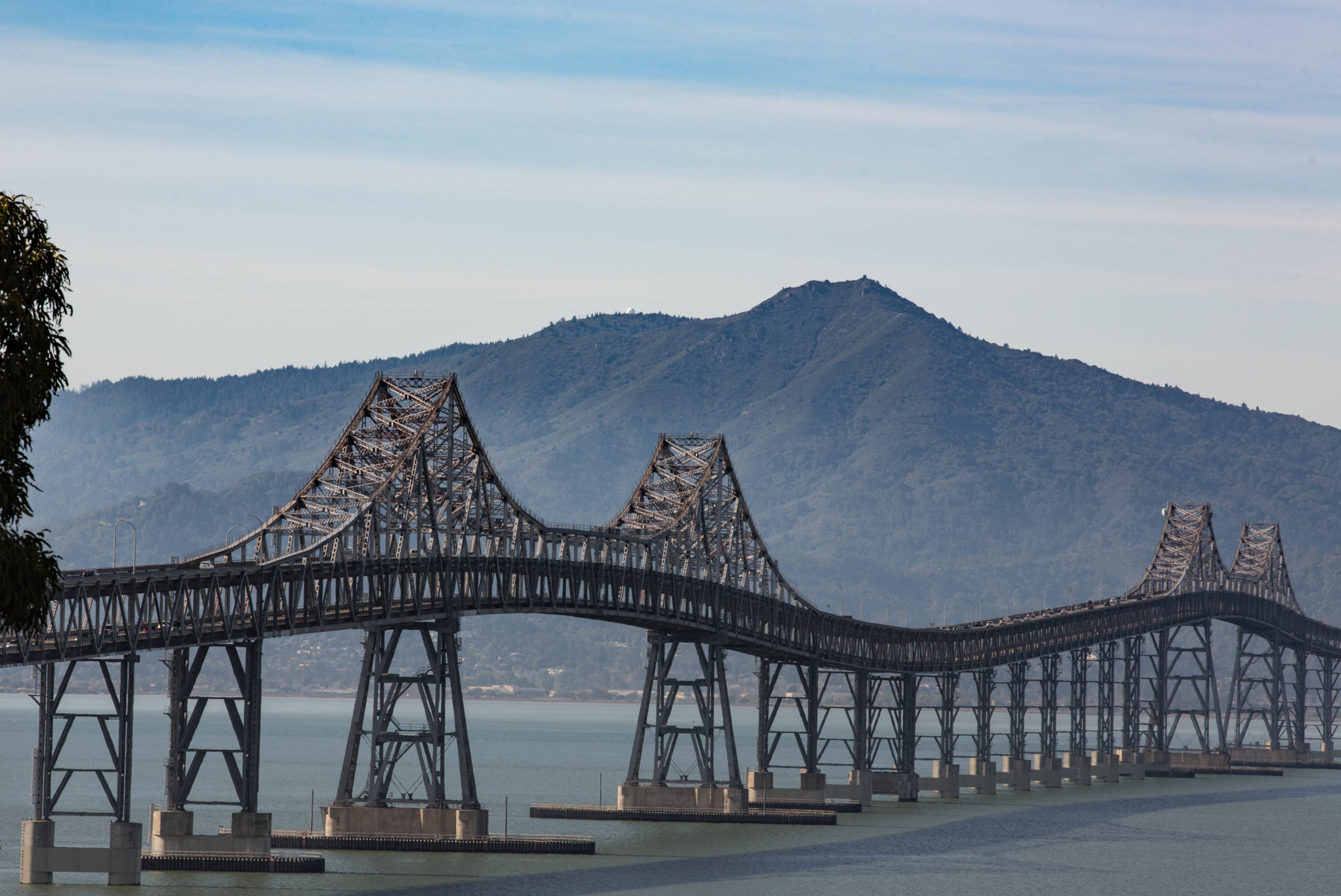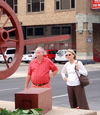Other notes on our southward drive:
–Passed through Salem, Illinois. One claim to fame, according to venerable roadside marker: It’s the gateway to Little Egypt (that’s Southern Illinois, for Alan Keyes and other non-Prairie Staters). Another: It’s the birthplace of William Jennings Bryan, memorable losing presidential contender and opponent of evolutionary theory. Another: Oil was discovered near town in 1938; by ’42, they were pumping 259,000 barrels a day from there (we saw some scrapped oil pumps just outside Salem).
–Speaking of Keyes, we drove the entire length of the Land of Lincoln and saw not a single Keyes sign. Dad thinks maybe that’s because the Republicans haven’t made any. Saw maybe a dozen Bush-Cheney signs. A half-dozen for Barack Obama. One for Kerry — in the window of a United Mine Workers hall in Benton. Not a lot of interest in big-time national-type politics, sign-wise, in a 400-mile tour of the state. But there are tons of signs for everyone else who’s on a ballot: state legislative candidates, sheriffs, state’s attorneys, coroners, judges, you name it. The other impression: This is big yellow-ribbon “support our troops” country.
–We detoured slightly through Vienna, hometown of late legendary Illinois Secretary of State Paul Powell. Mom and Dad actually saw him speak once, on behalf of John Houlihan, a Park Forester and World War II Marine amputee (he lost a leg at Iwo Jima is the story I heard) who was running for the state House of Representatives in the late ’60s. Powell appeared at a dinner in Joliet and apparently was the most captivating (even lovable, Dad says) of all the politicos present. Mom’s comment at the end of the evening was, “He’s a charming old rascal, isn’t he?” Powell died a couple years later, I think, and became a legend when something like $800,000 in cash turned up in his Springfield hotel room, stuffed in shoe boxes. I was confident there’d be some sign of him in Vienna, which I remember being told is pronounced VYE-enna, and sure enough, on the main drag an official-looking sign pointed to the “Paul Powell Museum.” We turned up a pretty residential street and drove to its end on the northern edge of town. No museum. Made a couple other passes with no success. We’ll have to look again the next time we pass through Vienna.
–The country around Cairo is lush, levee-protected bottom land. Cairo itself, though, is a blasted-looking place that looks like it could be washed away with one more good flood. You get a hint of that driving through on the main road, Washington Street/U.S. 51. Dad spotted a building collapsing a block over toward the levee, on our left, and I turned that way to see whether we could get up on the embankment and see the Ohio River. We found a place to drive up on the levee as the sun went down. Even filled with barges and bordered by a semi-industrial landscape, the big spread of water flowing in its final mile to the Mississippi, visible just beyond a bend below town, is memorable. Then we retreated down into the heart of Cairo’s broken-down historic district. A line of battered old buildings line a wide street parallel to the levee. But it looks like it would take nothing to knock them down. The only signs of life were at a couple bars that have managed to stay open. The vintage-looking streetlights and wrought-iron benches along the deserted streets only added to the sense of twilight desolation.
–Staying the night in Charleston, Missouri. Comfort Inn. Cuisine: McDonald’s. Dad notices in perusing the local phone book that there are seven cotton gins listed in the area. Two K-marts and a bunch of Wal-Marts, too.
Like this:
Like Loading...



